Pests of carnivorous plants
Carnivorous plants are attacked by various pests. The most common pests of carnivorous plants, their symptoms, and how to combat them are detailed below in the text.
It is always advisable to test the concentration of chemical sprays on a single plant. If the spray does not harm the plant, it can then be applied to all affected plants.
Aphids
Aphids are one of the most common pests you can find on your carnivorous plants. They primarily attack new, growing young leaves, causing them to deform due to the aphids‘ feeding.
To combat aphids, mechanical removal can be effective in the early stages when their numbers are still low. Another option is chemical treatment. Suitable products include commonly available Fast K or Mospilan 20SP. For less sensitive plant species, the dosage from the instructions can be used. For more sensitive species, it is necessary to reduce the concentration. The final option involves biological solutions, such as parasitic wasps or predatory mites. The advantage of these is that they are not harmful to the plants, although their effectiveness may not always be as reliable as chemical sprays.
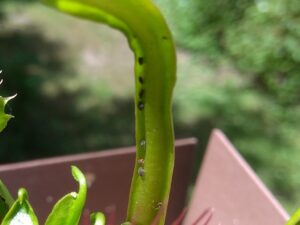
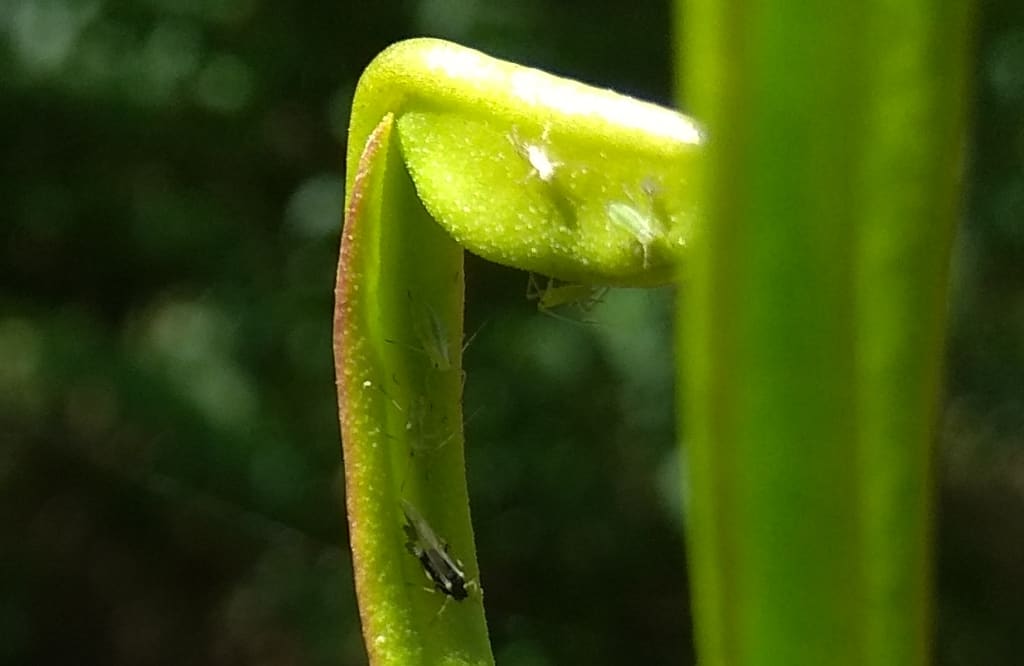
Spider mites
Spider mites are also a very common type of pest. This pest can be identified through several signs. The first sign includes white spots on dried black traps. Another sign, particularly with Venus flytraps, is white spots on the outer sides of the traps. For pitcher plants, there is deformation of new traps, or the traps may die prematurely—similar effects can be seen in Nepenthes. In general, all plants noticeably slow their growth after infestation.
To combat spider mites, chemical treatment can be used. Suitable products include Floramite, Omnite, or Vermitec. For less sensitive species, the dosage from the instructions can be applied. For more sensitive species, it is necessary to reduce the concentration. Another option is biological treatment using predatory mites.
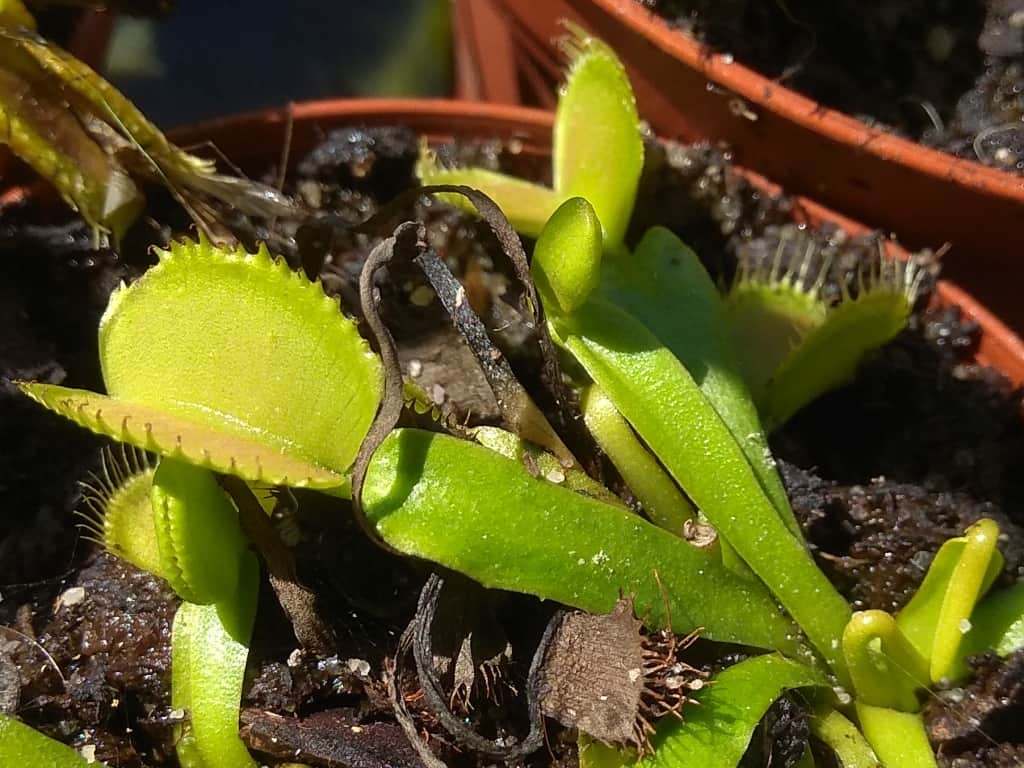
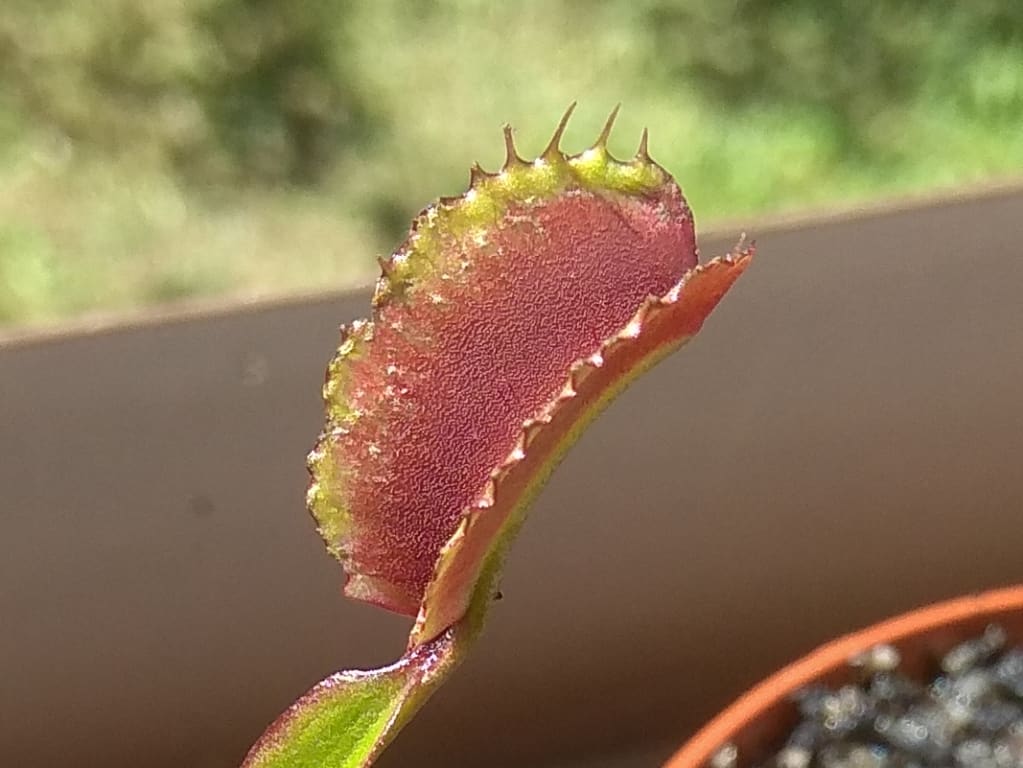
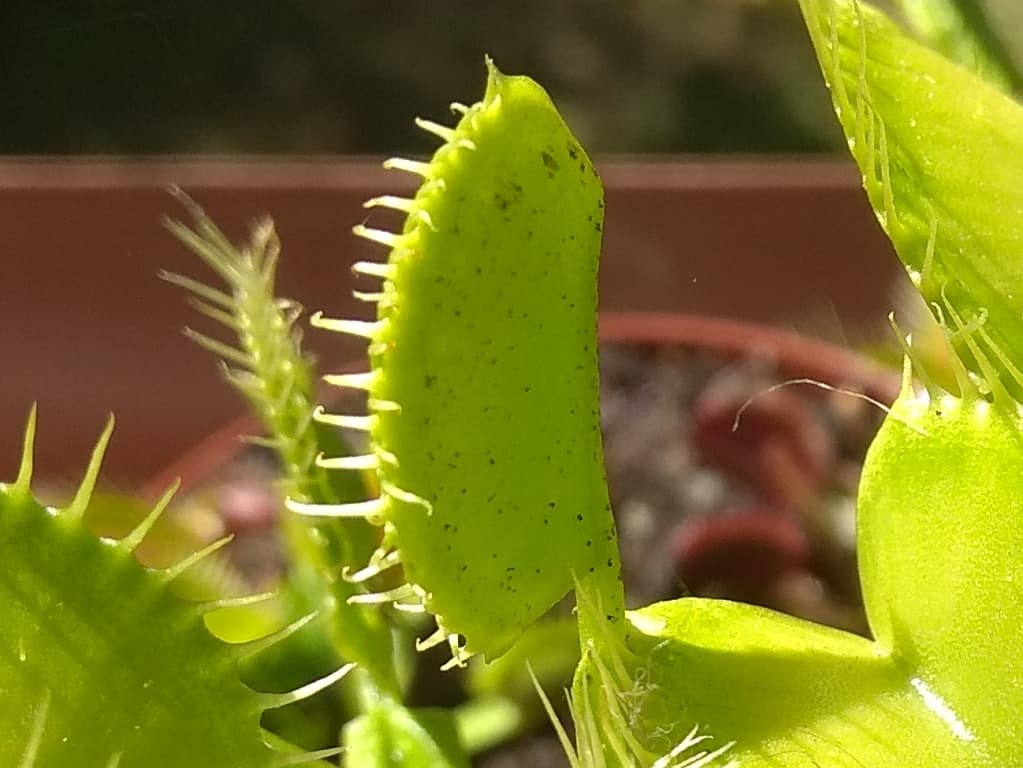
Fungus gnats
Another common type of pest is fungus gnats. These are small flies that do not directly harm the plants. The problem arises when they lay larvae in the substrate, which then attack the plant’s root system. The most noticeable sign of infestation is slime trails in the substrate left behind by the larvae. Sometimes, larvae can be found when inspecting the substrate—these are translucent larvae with a „black worm“ inside their bodies. Infested plants do not grow as vigorously as before, as they lose their roots.
To combat fungus gnats, chemical treatment can be used, such as Mospilan 20SP. Another option is biological treatment with parasitic nematodes. A final method is using traps, like burying a potato in the substrate. The trap must be checked regularly. Flying gnats can be prevented by catching them on sticky traps.
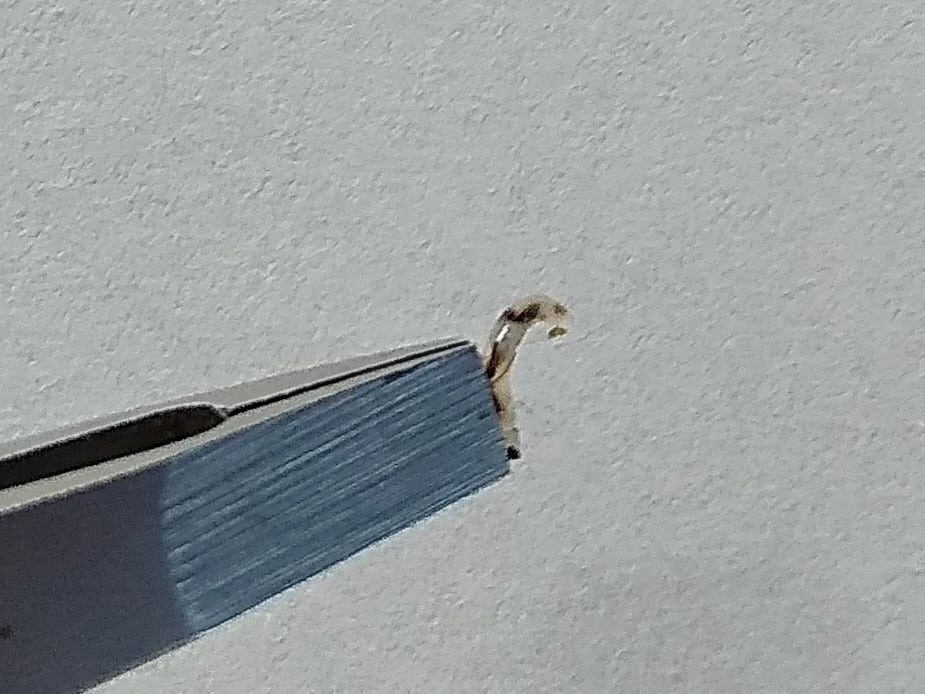

Powdery mildew
Powdery mildew is a parasitic fungal disease that attacks all above-ground parts of plants. It is most commonly found on plant leaves. Affected plants can be identified by dark spots covered with fine fuzz, resembling a white mold.
Powdery mildew is highly resistant, requiring multiple spray applications for treatment. Sprays work preventatively, so it’s advisable to trim the infected plant parts. There are many products available to combat mildew; I’ve had good experience with TALENT in a concentration suitable for ornamental plants.
Another option is a natural spray prepared from horsetail. Steep 2 g of dried horsetail in 1 liter of boiling water for 24 hours. Apply the spray 2 to 6 times at 7-day intervals.
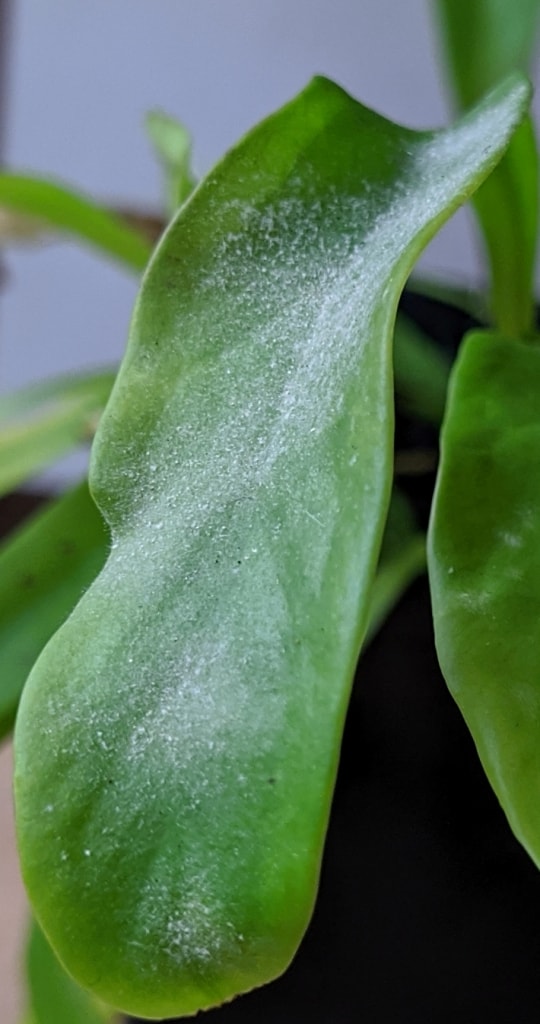
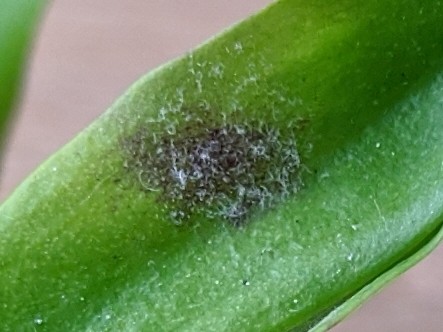
Scale insects
Scale insects are sap-feeding pests that most commonly attack pitcher plants (Sarracenia) and less frequently, Heliamphora. They target all above-ground parts of the plant, preferring older traps. Infested plants gradually weaken, and their traps die prematurely. A more labor-intensive and less effective removal method is the mechanical elimination of individual insects. The downside is that missing even one scale insect in the plant crevices can lead to a reinfestation.
A more effective solution is a chemical spray, such as Karate Zeon, used at a concentration suitable for houseplants. Scale insects have a protective coating that shields them from sprays, so a surfactant, like a dishwashing liquid (e.g., 2-3 drops per liter of solution), must be added to the mixture. It is advisable to repeat the spray application after 14 days.
Additional pests will be added soon.

